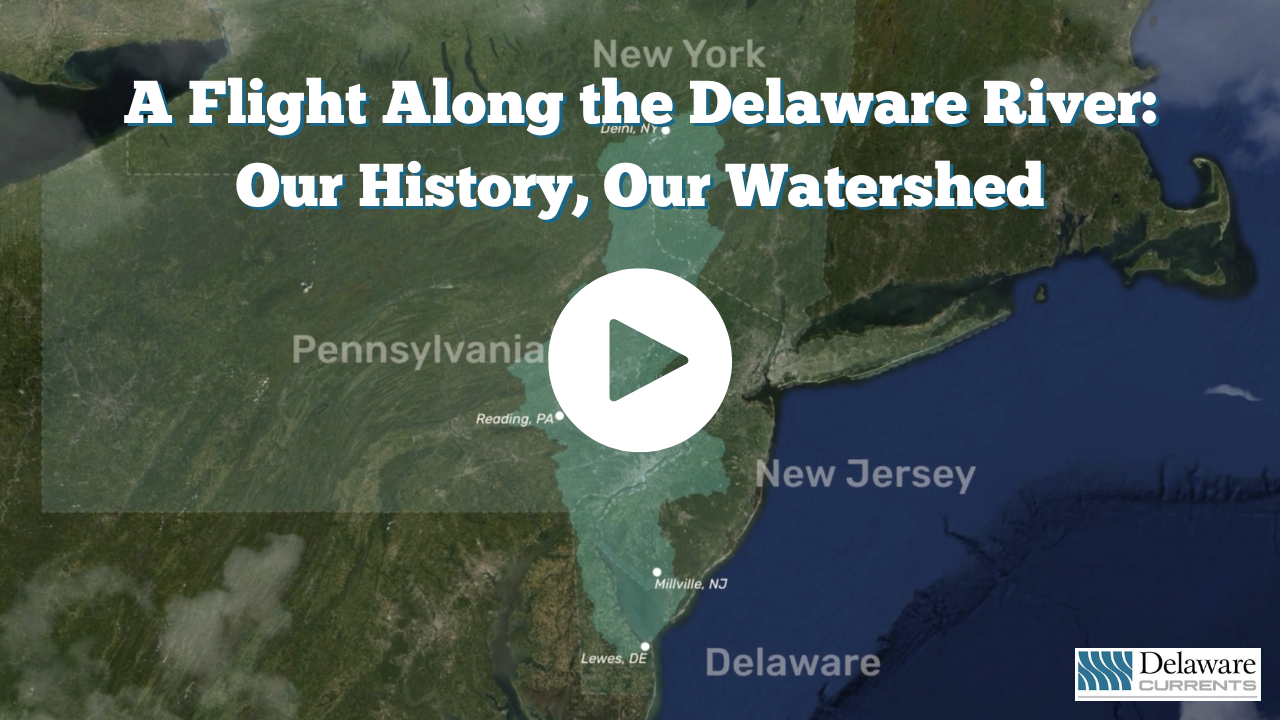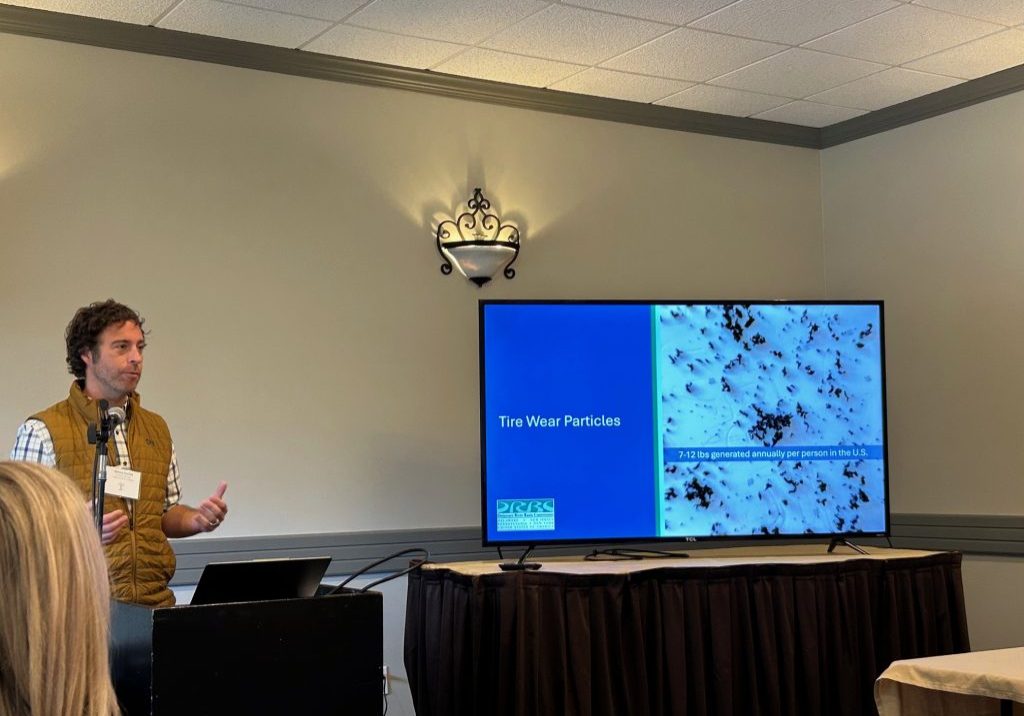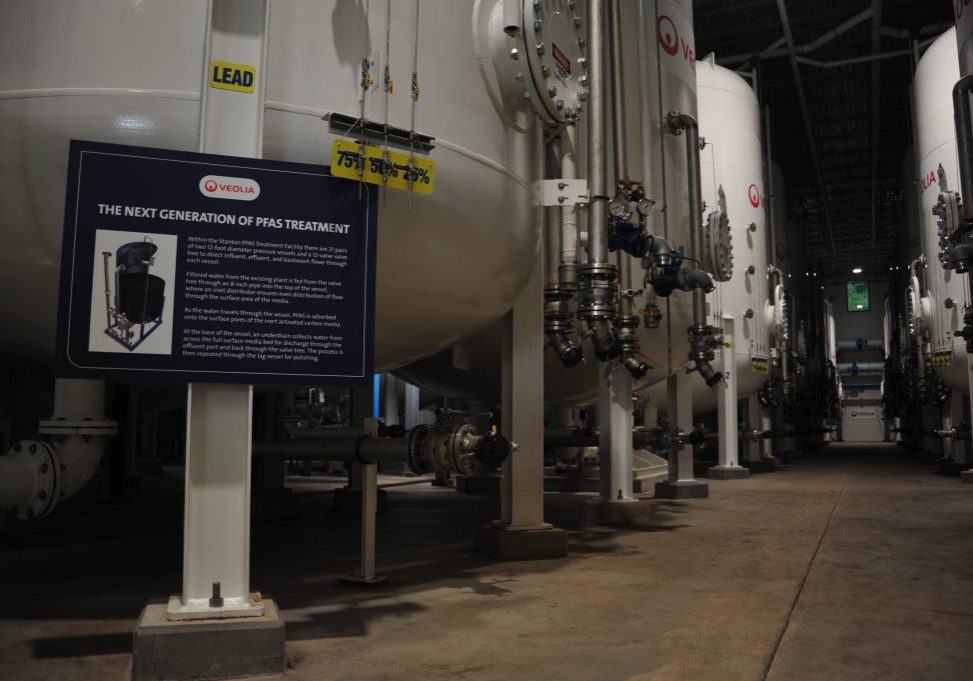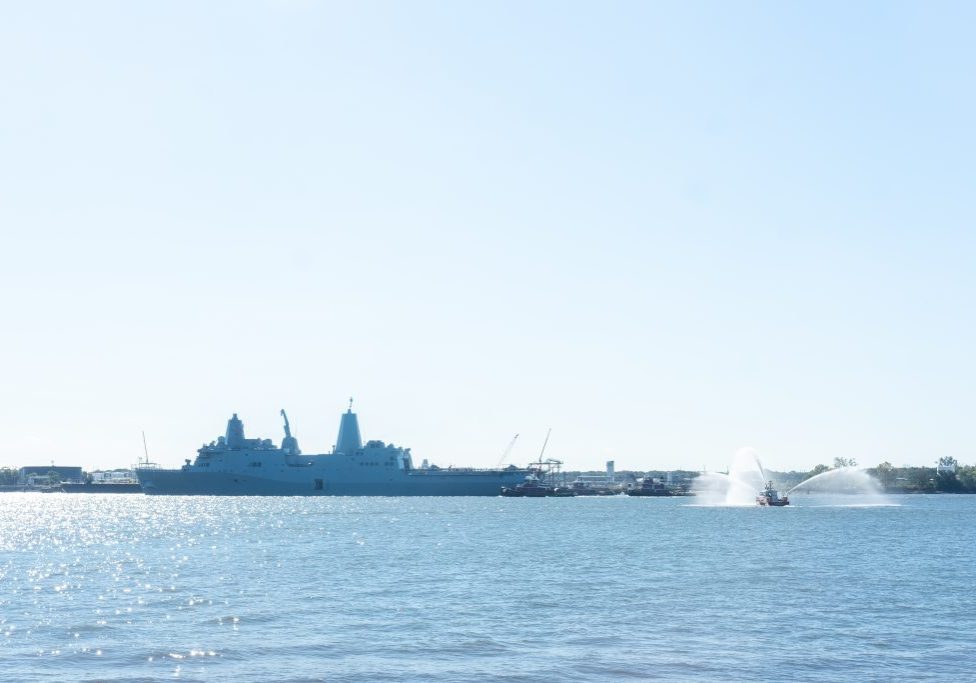
‘The Big Think’ with Steve Tambini, former executive director of the DRBC
| March 31, 2025
A series of conversations with people who have worked in and for the watershed, sharing their expertise and knowledge.
What is your framework for thinking about the Delaware River and its watershed?
I was once on a conference panel during my time with DRBC when someone asked me a similar question. They wanted to know what “water security” meant for the Delaware River Basin — not in the post-9/11 sense of security, but in terms of ensuring a sustainable water future for our watersheds, regions, states and communities.
I probably fumbled through my answer at the time, but it was a great question — one that pushed me to think more systematically about the key elements of water security in the basin. I adopted a framework built around four foundational focus areas: water availability, water resilience, water quality and water equity. These elements don’t exist in isolation — they are deeply interconnected and must be considered together.
Beyond these pillars, I also believe that achieving true water security requires sound science, foundational engineering and robust planning. These principles drive smart water policy and lead to measurable, positive outcomes. That’s what made my work at DRBC so rewarding — seeing these strategies in action. For more than 60 years, DRBC has applied this framework successfully, benefiting millions of people and making a lasting impact on the region.
So, regarding the first focus area: Is there enough water available to meet the needs of the basin?
Generally speaking, yes. On average, the Delaware River Basin receives enough annual rainfall to meet routine water needs. Most people don’t think twice about where their water comes from — faucets run, streams flow, and life carries on. That’s a good thing, but it’s also important to recognize some unique water availability challenges in the basin to ensure smart planning for the future.
For starters, if you look at a map of major U.S. river basins, the Delaware River Basin stands out as relatively small in land area. Despite its size, it supplies water to major metropolitan and suburban areas, serving about 4 percent of the U.S. population.
Adding to the challenge, more than 9 percent of the total water withdrawn from the basin each year is exported outside the watershed. This water supports essential needs in New York City and Central New Jersey, but because it doesn’t return to the hydrologic cycle within the basin, it’s considered “consumptive use.” Managing these out-of-basin diversions is part of a complex Supreme Court Decree.
Another key challenge is controlling saltwater intrusion. Since the Delaware River and its tidal estuary are undammed and open to the Atlantic Ocean, there’s nothing physically stopping saltwater from moving upstream. The only thing that keeps it in check — preventing impacts on drinking water supplies, industrial intakes, aquatic life, and wetlands — is careful management of freshwater flowing downstream. During dry conditions, releases from water storage reservoirs supplement river flows to help maintain the salt front’s location.
Is there more the basin can do to improve water availability?
I think there are several opportunities to explore.
First, too much water is still being wasted. Improving water efficiency shouldn’t just be a priority during droughts. It should be a long-term strategy. Some jurisdictions in the basin have adopted high-efficiency water standards for plumbing fixtures and stricter regulations on system leakage. However, for most, this hasn’t been a focus. There’s room for improvement.
Second, water availability is also a highly localized issue. The DRBC, state agencies, and water utilities work together to ensure that smaller sub-basins and utility service areas have an adequate supply. To support this, DRBC has been actively developing water use projections and conducting groundwater and surface water availability studies at the sub-basin level. This kind of detailed planning is essential. It provides the foundation for future infrastructure and policy decisions.
Finally, flow management remains a complex challenge. The Delaware River Basin Compact allows for changes to the 1954 Supreme Court Decree with unanimous consent from the decree parties, including the City of New York. This flexibility has been invaluable in adapting to the Basin’s changing, growing, and sometimes competing water needs. However, for too long, the terms of the decree parties’ flow management agreement has been in a state of uncertainty, open to major renegotiation. A long-term agreement among the parties needs to be finalized and codified in DRBC’s Water Code. That doesn’t mean it can never be adjusted again, but settling key foundational water availability issues now will provide much-needed stability and support sustainable, basin-wide planning.
You mentioned water resilience as part of your framework thinking. Is the basin “resilient”?
That’s a big question. Water resilience isn’t a simple yes-or-no answer. It depends on the specific systems, the threats, and the scale. In many ways, the basin has made progress, but challenges remain.
Take flooding, for example. We’ve all seen the devastating effects of both catastrophic and more routine neighborhood flooding more times than we’d like to remember. On the positive side, flood losses have been reduced over the years thanks to several flood control reservoirs on major tributaries, ongoing flood mitigation efforts and improved early warning systems. Land management, conservation and preservation efforts have also helped. However, we know that climate change is already bringing more severe rainfall events and more extreme tidal flooding, meaning the risk is far from eliminated.
On the other end of the spectrum, there’s drought. In 2024, most of the basin went 42 consecutive days without measurable rain after several dry months. A crisis was averted thanks to winter rainfall, but it raised serious questions. What if we experienced another drought like the record-breaking one in the 1960s? Or worse, what if climate change leads to a multi-year drought that’s even more severe?
One of my concerns is that the Basin hasn’t built a new reservoir for flow management since 1988. Instead, much of the focus has been on optimizing or reallocating existing supplies rather than increasing overall storage capacity. This could be a major issue during prolonged dry periods. Compounding the challenge, climate change is driving sea level rise in the Delaware River Estuary. Without additional freshwater releases from reservoirs during dry periods, rising seas will push saltwater further upstream, threatening drinking water supplies and ecosystems. When I was with DRBC, we initiated efforts to enhance drought resilience, particularly through the study of increased freshwater storage.
We haven’t talked about water quality yet, and for many people, that’s a top priority. How do you see it fitting into the bigger picture of water resource management?
These four areas aren’t ranked in any specific order. I certainly don’t undervalue the importance of clean water, but as I often say, ‘It needs to be wet first’ — aligning with the water cycle.
I support many organizations, programs, and campaigns in the basin that focus solely on improving water quality. However, I believe DRBC takes the most comprehensive, basin-wide approach to water resource management, striking the balance and managing the relationship between water quality and quantity.
Has water quality improved in the basin?
Yes, water quality has improved in many areas of the basin, and that’s one of the reasons working with DRBC was so rewarding. DRBC’s policies and programs often produce measurable, positive results. However, as you know, many challenges remain from known and emerging threats to water quality.
One of the most important lessons I learned from the experts at DRBC is that science must lead the way when it comes to lasting water quality improvements. Reducing pollutants requires a clear understanding of where they come from, evaluating the best methods to prevent or remove them, and then funding and building the necessary infrastructure to support pollution reduction, whether that means “green” nature-based solutions or traditional “gray” infrastructure like upgraded pipes, pumps and plants.
That’s why I sometimes suggest we pause and examine certain well-intentioned “campaigns” and niche programs advocating for clean drinking water. While raising awareness is important, some proposed programs either overpromise and underdeliver, focus on symptoms rather than sources of pollution, or invest in small-scale projects that don’t translate into meaningful improvements downstream. Real progress comes from applying sound science, rational policies, and solid engineering. That’s what truly moves the needle in improving water quality.
Can you provide some examples of successful water quality improvements?
There have been many successful water quality programs in the Delaware River Basin, thanks to the efforts of the DRBC, other organizations, and the implementation of the Clean Water Act. One of the best examples is the dramatic improvement in dissolved oxygen levels in the urban Delaware River Estuary.
To give a little background, one of the main reasons the DRBC was created in 1961 — before the EPA even existed — was to address severe ‘dead zones’ near Philadelphia, where oxygen levels in the river were too low to support aquatic life during the summer.
In the 1960s, DRBC developed its first water quality model and used it to create a pollution reduction plan, setting water quality standards and regulations for wastewater dischargers. Then, with the passage of the Clean Water Act in the early 1970s, federal funding became available to help build wastewater treatment infrastructure. Since DRBC already had a detailed plan in place, the basin was able to take full advantage of that funding. The result? New wastewater treatment plants were built, pollution levels dropped significantly, and dissolved oxygen levels in the estuary improved dramatically.
Today, those dead zones are gone. However, DRBC’s research has shown that the original water quality standards set in 1967 weren’t high enough to fully support all life stages of all fish species. To address this, DRBC developed a more advanced water quality and tidal flow model to explore ways to further improve dissolved oxygen levels. The EPA has supported these findings, and as a result, new water quality standards have been proposed for the Delaware River Estuary. Research and monitoring have pinpointed ammonia from wastewater discharges as the primary cause of the remaining dissolved oxygen challenges.
For context, some areas in the neighboring Chesapeake Bay still experience dead zones under certain conditions. While both the Delaware River and Chesapeake Bay face similar pollution threats, such as excess nutrients, bacteria, toxic substances, and emerging contaminants, the sources of these pollutants sometimes differ. In the Chesapeake Bay, agricultural runoff is the primary source of nutrient pollution affecting dissolved oxygen levels, whereas in the Delaware River Estuary, ammonia from wastewater discharges is the main contributor. The key takeaway? Science should always guide our approach.
For those interested in more examples, DRBC recently published a 2025 State of the Basin report, which highlights water quality trends, success stories, and ongoing challenges. As this report shows, monitoring water quality and measuring results are essential for effective water management.
The last focus area you mentioned is water equity. That sounds like DEI. Is it?
The Delaware River Basin is home to a wide range of communities — urban, suburban, and rural — each with different needs and perspectives. Water equity is about ensuring that all of these communities have a voice in how water systems are managed and that everyone benefits from this vital resource. While progress has been made in engaging communities across the basin, there’s still work to do. Strong engagement not only helps shape better water policies but also creates opportunities for people from all backgrounds to enter the water workforce.
Water equity also means making sure everyone has access to clean, safe water — regardless of income level or location. This often raises important questions about affordability. Many water and wastewater systems need ongoing investment to maintain and improve infrastructure. Just as electric and gas utilities offer broad payment assistance programs, water utilities must also establish and expand similar programs to support those in need.
So, while water equity does connect to certain DEI principles, like inclusion and fairness, it’s ultimately about water that is accessible, sustainable, resilient, and managed in a way that serves all communities.
Do you have any final thoughts to share for this ‘Big Think’?
Sure. The Delaware River Basin is an incredible natural resource that supports both the ecological and economic water needs of one of the most populated regions in the U.S. Meeting those needs requires cooperative management through planning, engineering, science, and policy. Many individuals and organizations play a vital role in these efforts, often using cutting-edge innovation, new technology and social influence strategies to drive protection and improvement. Personally, I’ll continue advocating for a foundational and balanced framework, one that is based on water availability, resilience, quality, and equity, to ensure long-term success.






